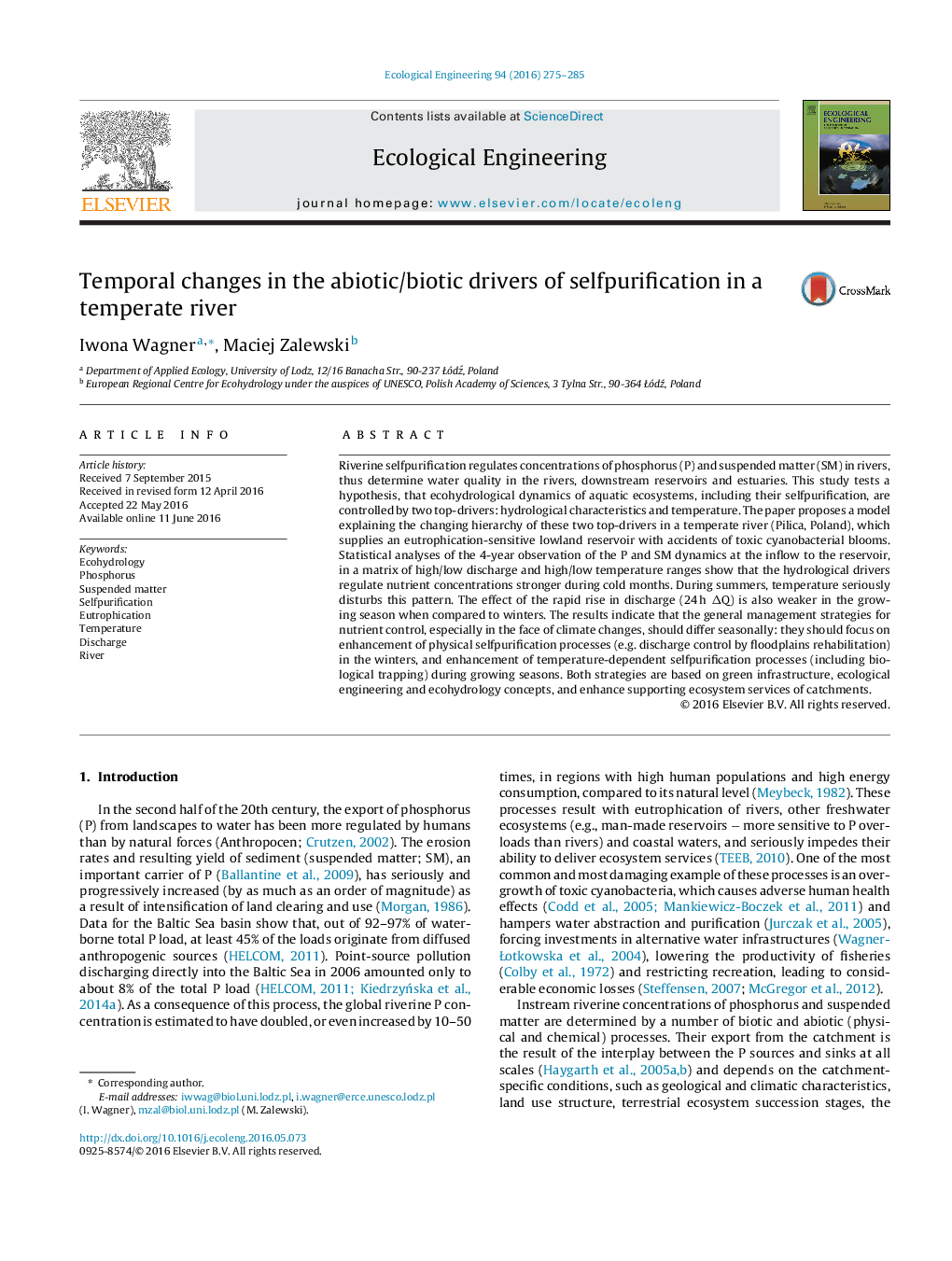| کد مقاله | کد نشریه | سال انتشار | مقاله انگلیسی | نسخه تمام متن |
|---|---|---|---|---|
| 4388554 | 1618005 | 2016 | 11 صفحه PDF | دانلود رایگان |
• In winters, P and SM concentrations in temperate river correlated with Q and precipitation.
• In summers, P and low-Q SM concentrations were driven by temperature, the Q effect of lower.
• ΔQ correlated with P and SM in winters, while in summers only with SM in high-Q.
• Discharge/concentration correlation was positive in low and negative in high flows (hysteresis).
• Ecosystem services eutrophication management strategies should differ seasonally.
Riverine selfpurification regulates concentrations of phosphorus (P) and suspended matter (SM) in rivers, thus determine water quality in the rivers, downstream reservoirs and estuaries. This study tests a hypothesis, that ecohydrological dynamics of aquatic ecosystems, including their selfpurification, are controlled by two top-drivers: hydrological characteristics and temperature. The paper proposes a model explaining the changing hierarchy of these two top-drivers in a temperate river (Pilica, Poland), which supplies an eutrophication-sensitive lowland reservoir with accidents of toxic cyanobacterial blooms. Statistical analyses of the 4-year observation of the P and SM dynamics at the inflow to the reservoir, in a matrix of high/low discharge and high/low temperature ranges show that the hydrological drivers regulate nutrient concentrations stronger during cold months. During summers, temperature seriously disturbs this pattern. The effect of the rapid rise in discharge (24 h ΔQ) is also weaker in the growing season when compared to winters. The results indicate that the general management strategies for nutrient control, especially in the face of climate changes, should differ seasonally: they should focus on enhancement of physical selfpurification processes (e.g. discharge control by floodplains rehabilitation) in the winters, and enhancement of temperature-dependent selfpurification processes (including biological trapping) during growing seasons. Both strategies are based on green infrastructure, ecological engineering and ecohydrology concepts, and enhance supporting ecosystem services of catchments.
Journal: Ecological Engineering - Volume 94, September 2016, Pages 275–285
